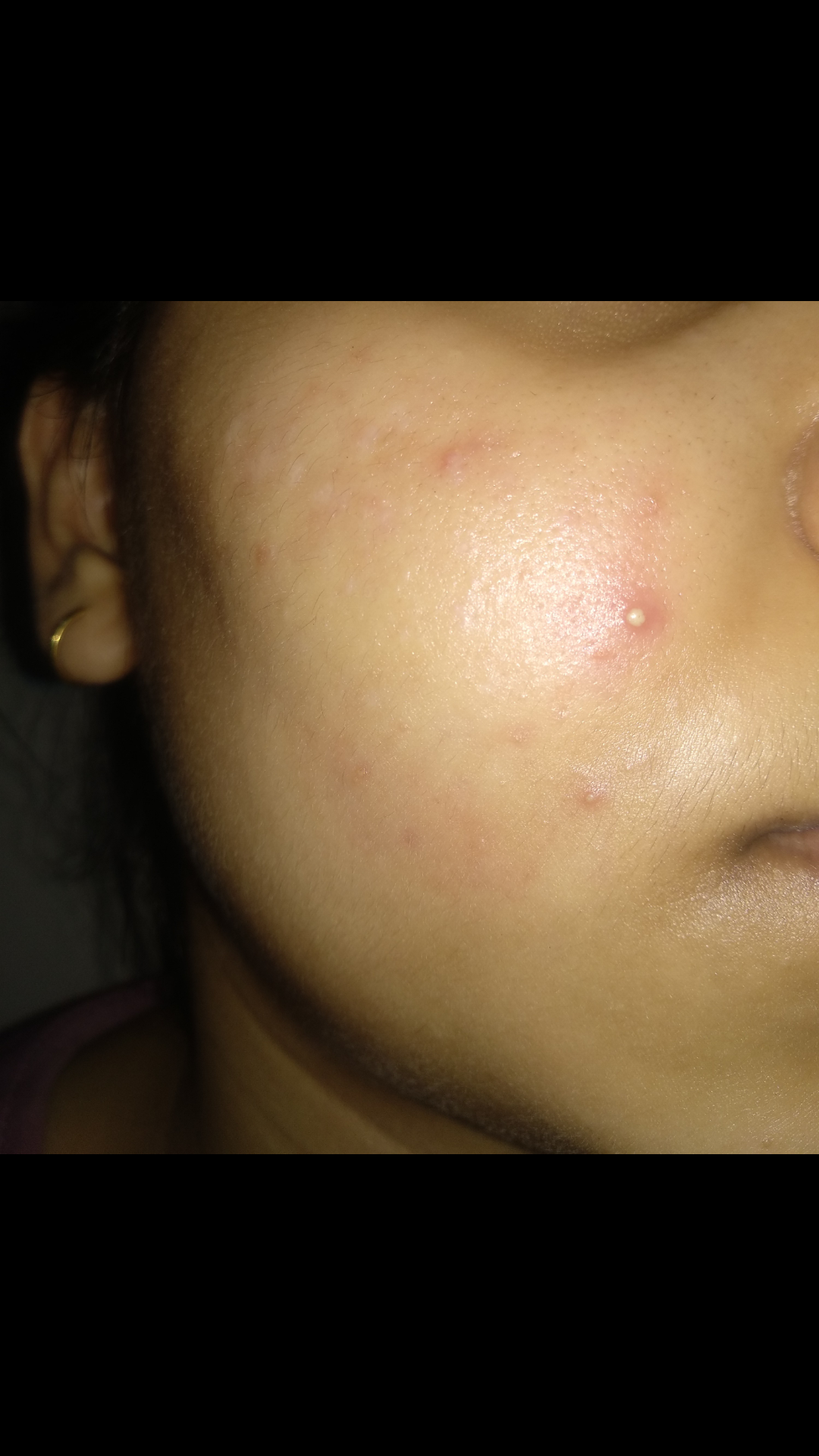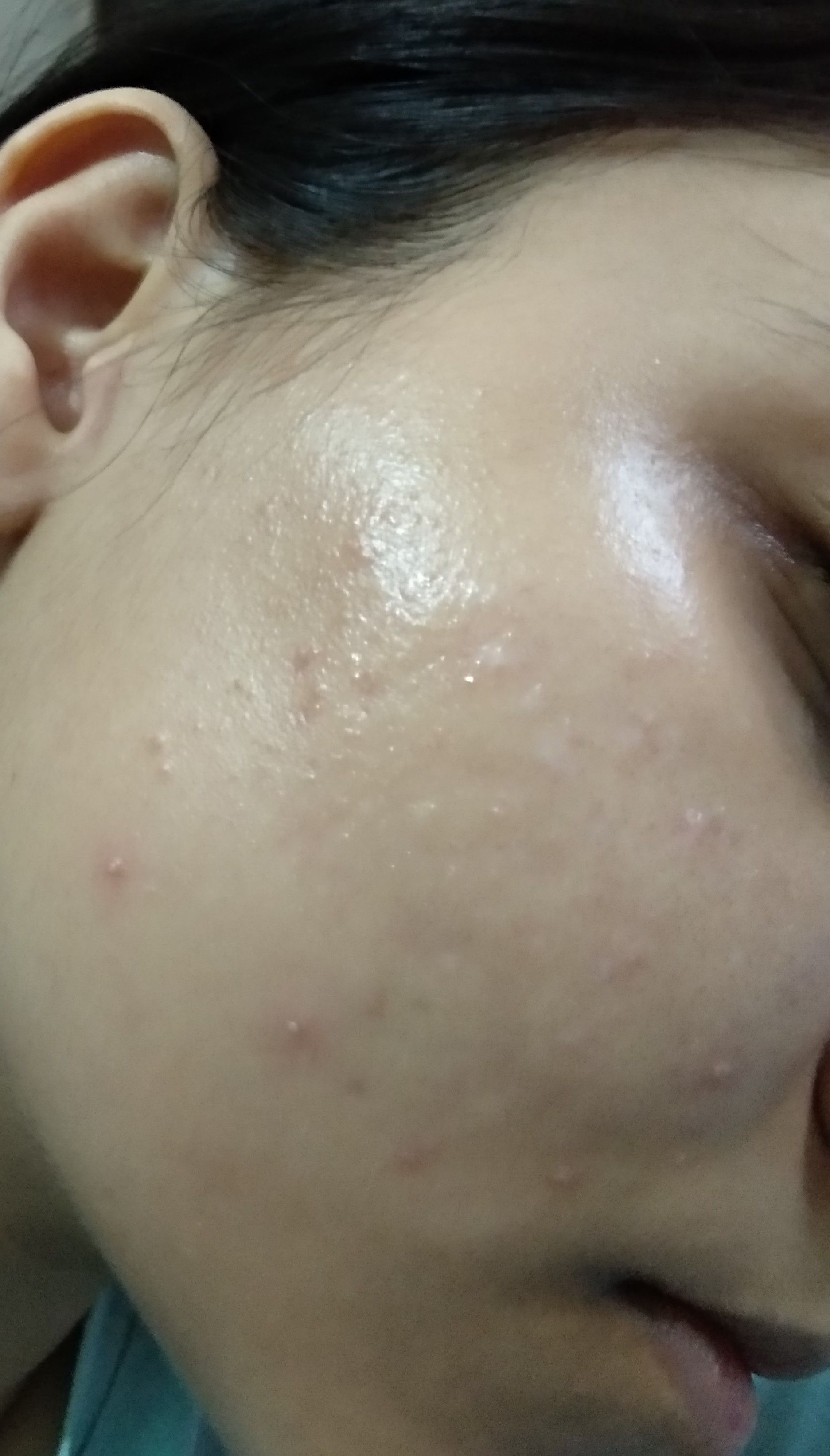Hey,
I'm dealing with acne from few years. In 2019 I was having some serious breakouts predominantly on forehead and cheeks, I did Accutane course and it got better after 6month course in small dosage. I was acne free by February 2020, nearby October 2020 I got few acne(I think it was hormonal) and I freaked out started using the glycolic and salicylic acid facewash added moisturizer, but from there I started getting small small acne filled with white pus, at first I thought it was purging but it didn't stop after months. I went to dermat, he prescribed me some antibiotics and clidamycin cream. Yes it made the acne bit less but it was there., fast forward I caught covid-19 and was already on antibiotics and other medicines hence stopped taking acne medication.. as it was causing me GERD issues. I simply used Niacinamide serum by minimalist. Things are under control but I get same acne, now on cheeks, alot, it starts with small clogged pore kinda, grows into pus filled acne with redness as you can see.
I drink very less water, I feel it can be due to dehydration as well, I don't use any moisturizer as I feel it is fungal and increase with moisturizer.
Help me pls.
Looks like just regular acne to my naked eye. I took accutane and mine came back too.
My best advice is the regimen, adding in AHA after 1 month. That should get you under complete control.
It might be demodex skin mites instead of bacterial acne. These are microscopic skin mites that everyone has at least a few of. A normal healthy immune system keeps them under control. The mites eat skin oil and possibly skin cells. This condition is frequently misdiagnosed as bacterial acne. Demodex mites do not respond to antibiotic treatment for bacterial acne. If the mites get overpopulated they can cause one or more of the following symptomslarge blackheads, papules, pustules, body acne, scalp acne, red irritated eyes. The mites live and die on a 2 to 3 week cycle. When the mites die, the pustules of dead mites appear. The mitesdo tend to come back in the same places. Accutane may appear to make it better by greatly reducing your skin's oil output and starving down the mite population. But Accutane just treats the symptoms it doesn't kill the mites directly. After stopping Accutane the mite population can rebound and the skin problems come back. That happened to the patient in the following medical study. Treatment with 2 weekly doses of Oral Ivermectin cleared his skin after months on antibiotics and Accutane failed to clear his skin.
https://www.ncbi.nlm.nih.gov/pmc/articles/PMC5489393/
A knowledgeable dermatologistcan test for demodex skin mite overpopulation. They now diagnose this skin condition as Rosacea Subtype II with papules and pustules. Sometimes your skin is red with demodex and sometimes it is not.
Your GERD issues might be related to Small Intestinal Bacterial Overgrowth (SIBO). SIBO has been closely associated with Rosacea Subtype II. SIBO either suppresses the immune system or provides a chemical to the skin that stimulates the overpopulation of demodex. Clearing the SIBO with a targeted antibiotic to treat the specific bacteria causing the SIBO, in most cases clears the skin. An endoscope test to collect a small sample of fluid from the small intestine is used to identify the specific bacteria that is causing the SIBO. Then the correct antibiotic is selected to clear bacterial overgrowth. A specific antibiotic only works against a small group of bacteria, so it is important to get the right antibiotic. Here are 2 more medical studies that tested 2 different antibiotic treatments shown to clear demodex skin mites. The first study tested Oral Ivermectin alone versus using a 2 drug treatmentOral Ivermectin + Oral Metronidazole. Adding Oral Metronidazole to the treatment was far more effective than Oral Ivermectin alone. At the time of the study, the medical researchers were not certain why Oral Metronidazole helped so much. Oral Metronidazole is highly effective against 2 different bacteria known to cause SIBO. The combined treatment worked for me after having Rosacea Subtype II misdiagnosed as bacterial acne along with SIBO for decades. Oral Ivermectin and Oral Metronidazole are available as inexpensive generic drugs.
https://www.sciencedirect.com/science/article/pii/S120197121201315X
The following medical study from 2016, tested the expensive antibiotic Rifaximin on Rosacea patients confirmed to have SIBO. It worked in a large number of cases. Rifaximin is highly effective against E. Coli bacteria which is known to cause SIBO. Rifaximin does not work against all types of bacteria known to cause SIBO. That why the endoscope test results are important to select the right antibiotic for treatment.
https://www.jaad.org/article/S0190-9622(12)02330-4/fulltext
If the problem isn't caused by demodex, it could be hormonal. Your doctor should be able to test your hormone levels to determine if hormones are the source of the problem. The doctor should also be able to test for fungal acne.
There is a really good option, Hypochlorous Acid (HOCL) spray to treat surface skin infections caused by bad bacteria, fungus, viruses or juvenile demodex skin mites. HOCL is a chemical produced by the human body in response to infections. HOCL is a very weak acid but a VERY strong antibacterial, antifungal, antiviral, and kills juvenile demodex skin mites. HOCL has been shown to break up biofilm on the surface of the skin.
HOCL is non-irritating but very potent killing 23 strains of bad bacteria in one study. HOCL does not kill the "good" bacteria that is a normal and healthy part of the skin's environment. Unlike Benzoyl Peroxide and retinoids, HOCL will not irritate the skin or cause peeling.
HOCL is used to sanitize hospital ICUs and operating rooms, medical and dental offices. The medical industry has used HOCL since WWI to clean battlefield wounds when they didn't have antibiotics. Tattoo artists and Piercers recommend HOCL spray to their clients to help them heal up clean.
HOCL is non-irritating to the skin and eyes. HOCL spray has no preservatives. HOCL is made by putting electrodes into salt water. There are no other ingredients but HOCL, a pinch of salt and water, so its super safe, non-irritating and highly effective. Zero safety warnings.
You can buy it on Amazon. There are numerous brands that are good including Heyedrate, Occusoft Hypochlor and BrioTech. I've used the others but currently use BrioTech since it is very affordable. Currently its $11.95 for a 4 ounce bottle. This is the same brand that the Tattoo Artists and Piercers recommend to their clients to heal without infection. Here';s the Amazon link:
https://www.amazon.com/BRIOTECH-Topical-Skin-Spray-Hypochlorous/dp/B00YZDHMWW/
Instructions: Apply after washing your face. Spray on face. Lightly massage it in with clean fingers. You can use this spray as often as you like (during the day as well as right after washing the face).
I'm adding the today's picture
Sorry if its not that clear, but as you can see I got three more white pus filled acne surrounded by bit redness.
The texture is bad due to these acne appearing on my cheeks as if they are making attendance everyday.
I added moisturizer to my routine and started drinking bit more water (I always try but I forget).
Btw I'm 24, female.
 Acne.org Products
Acne.org Products
